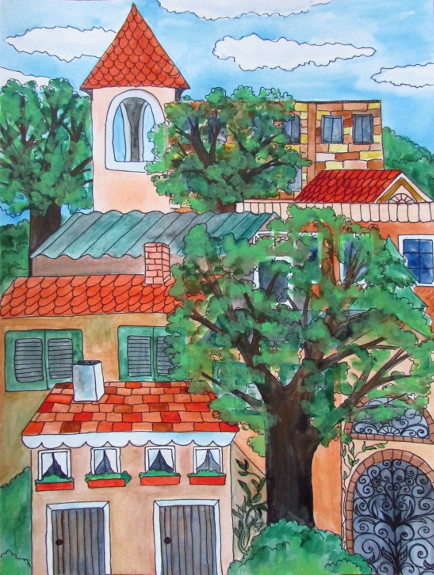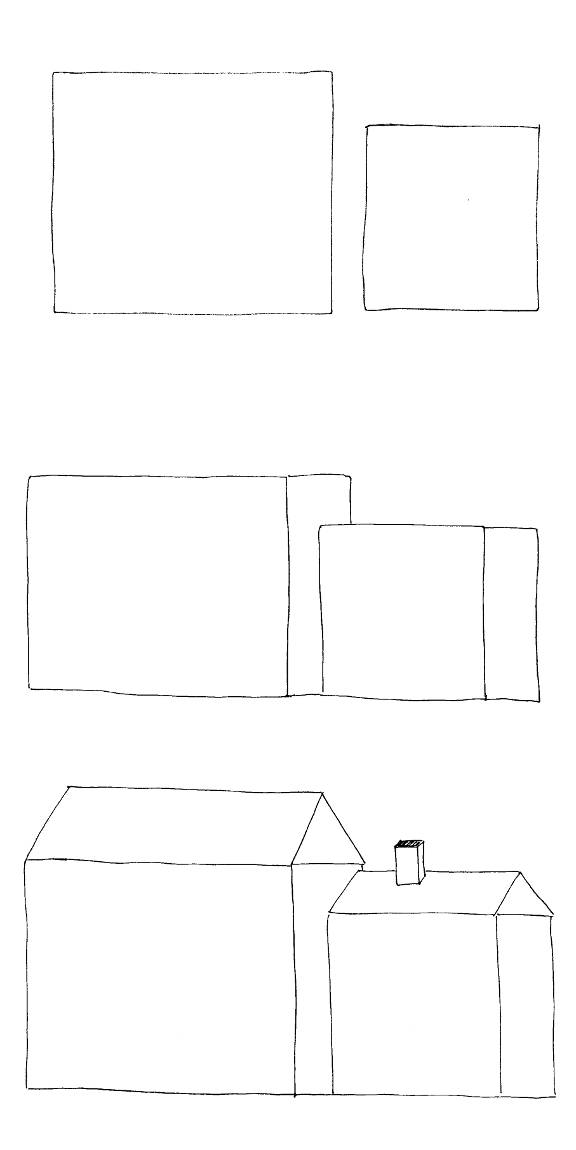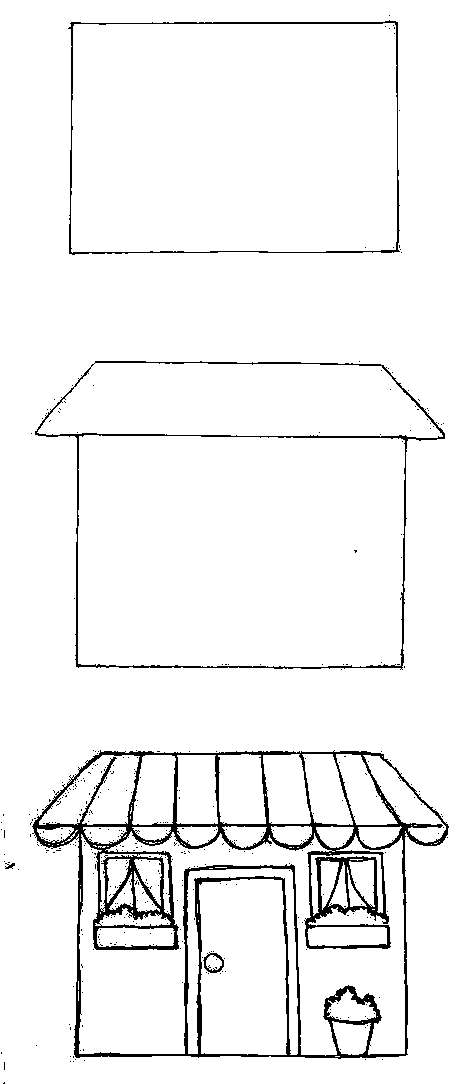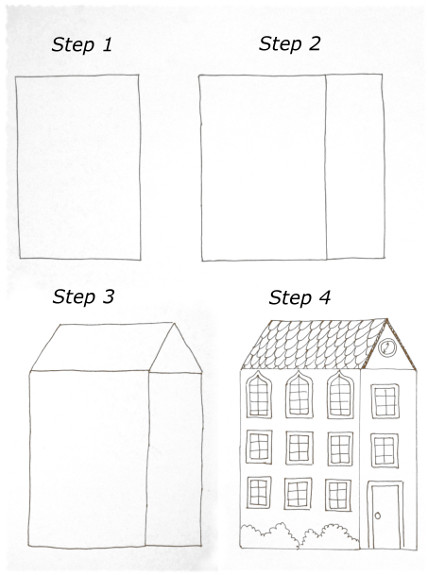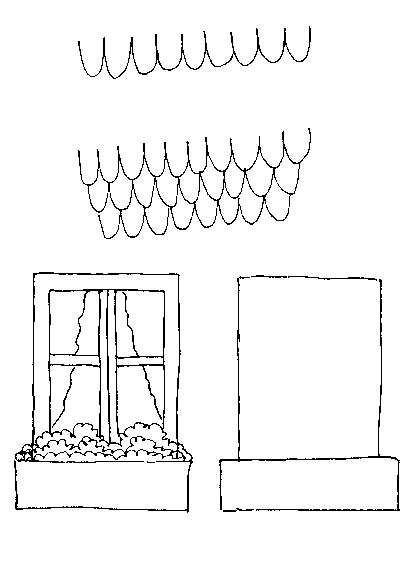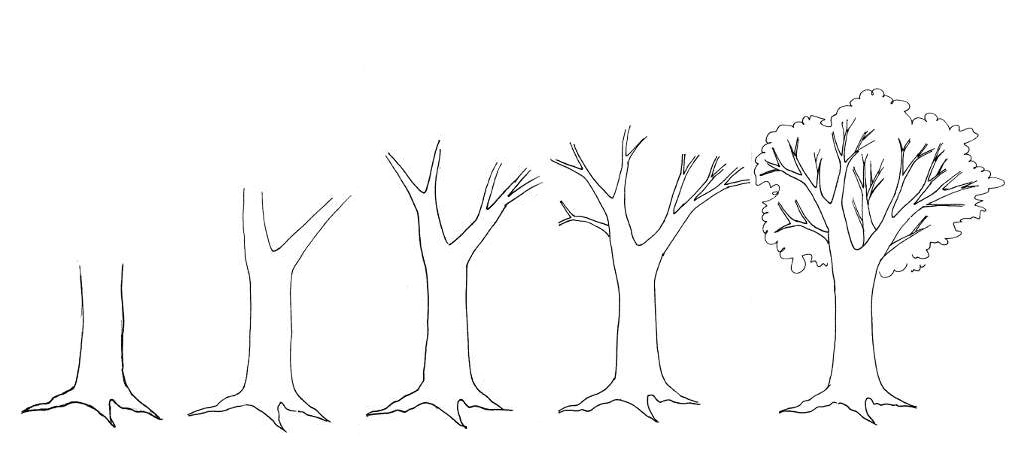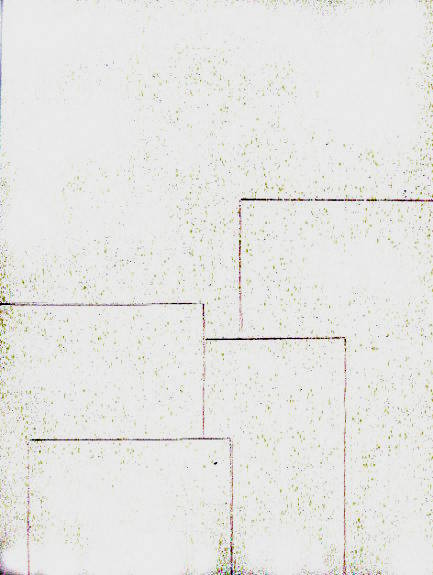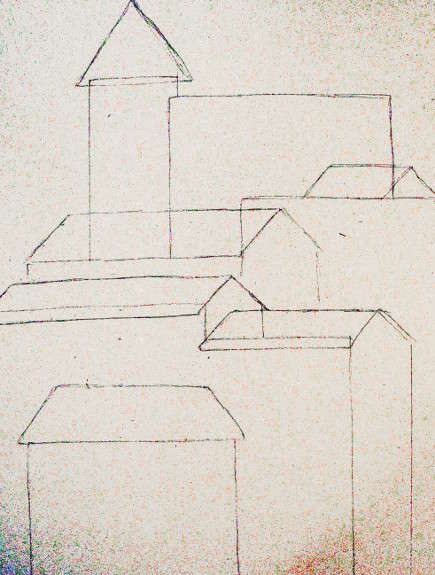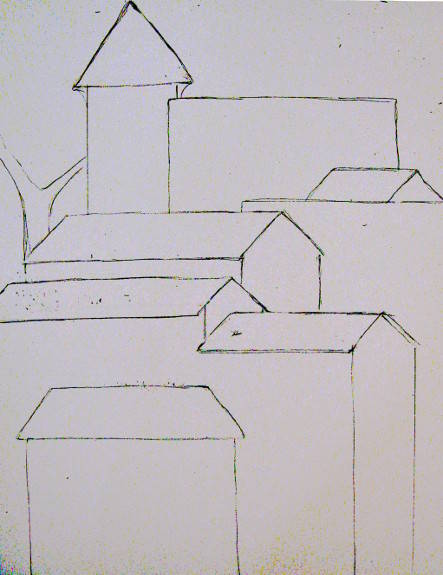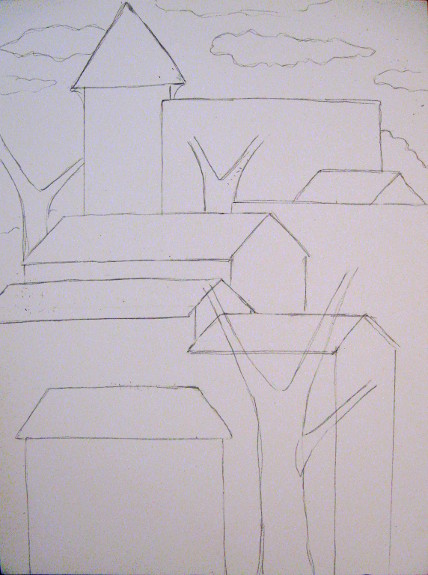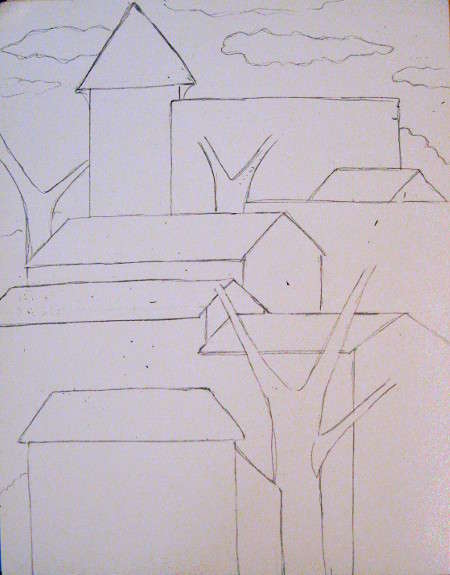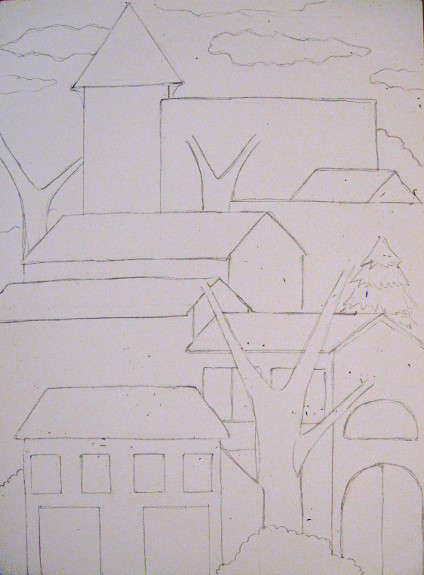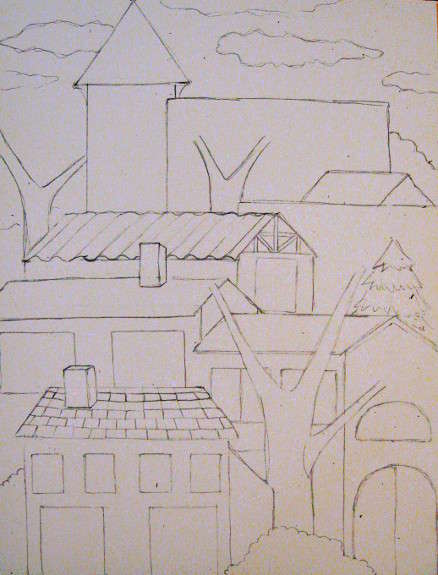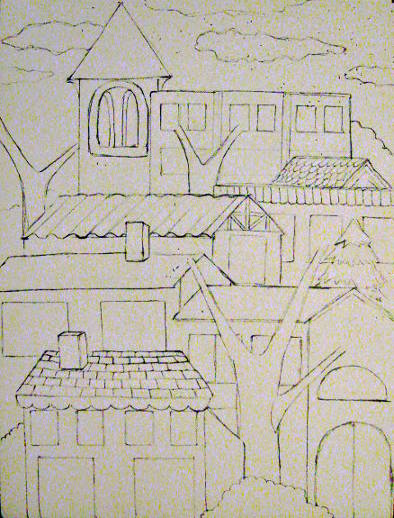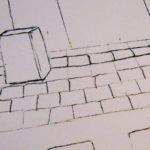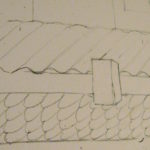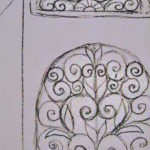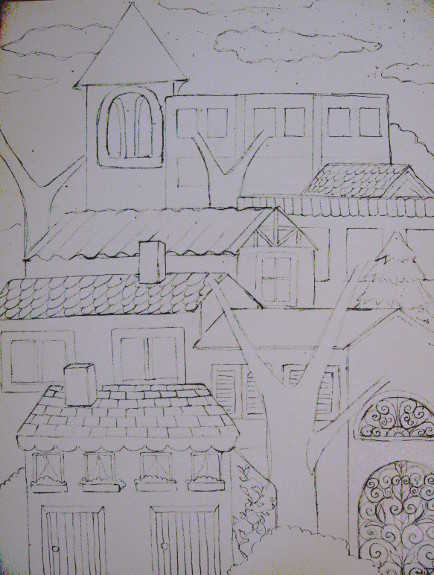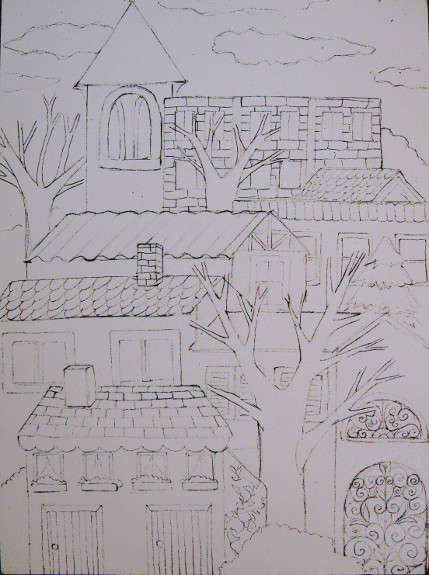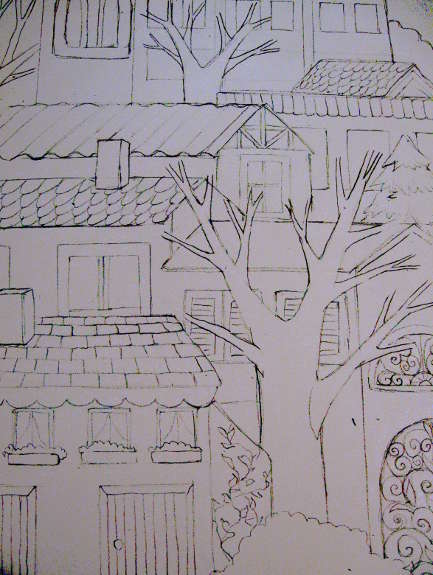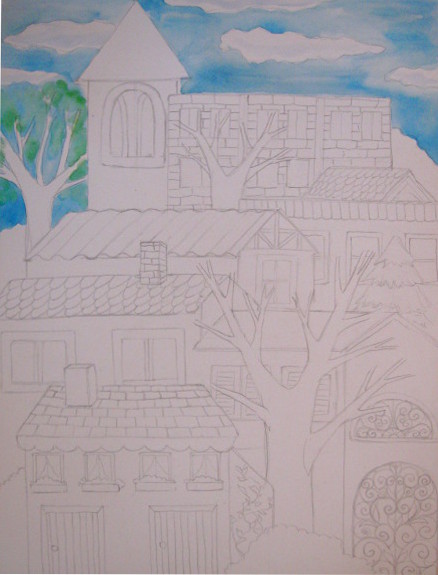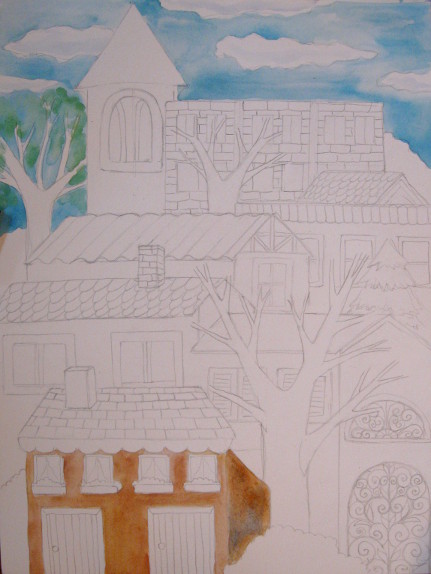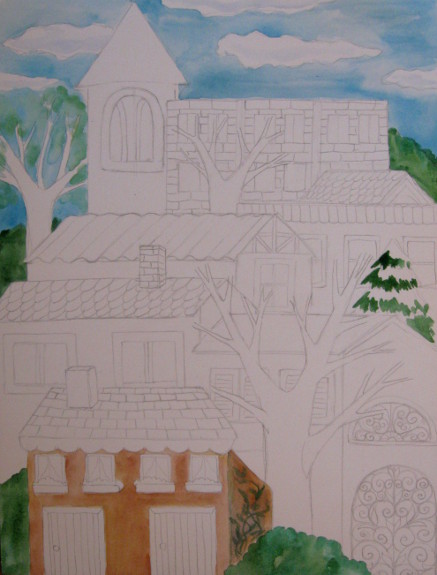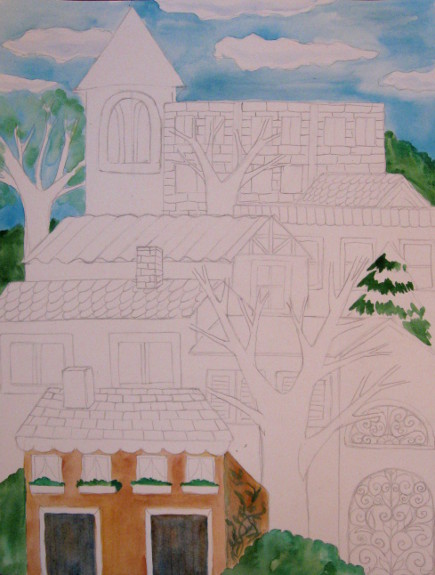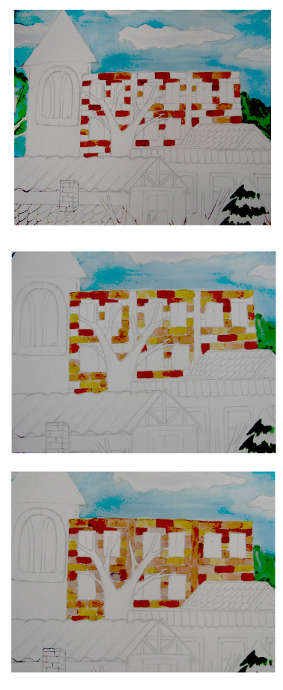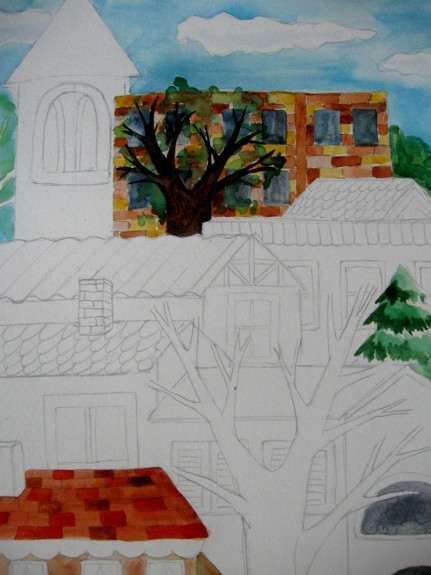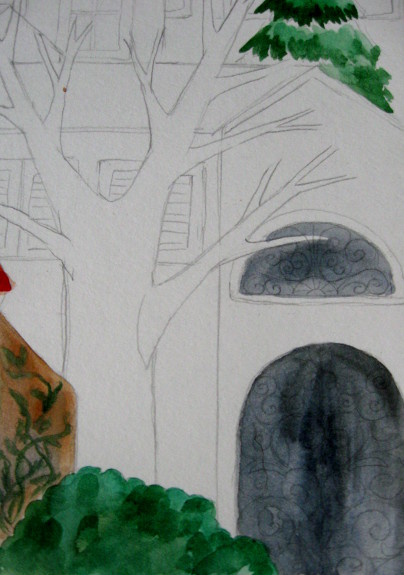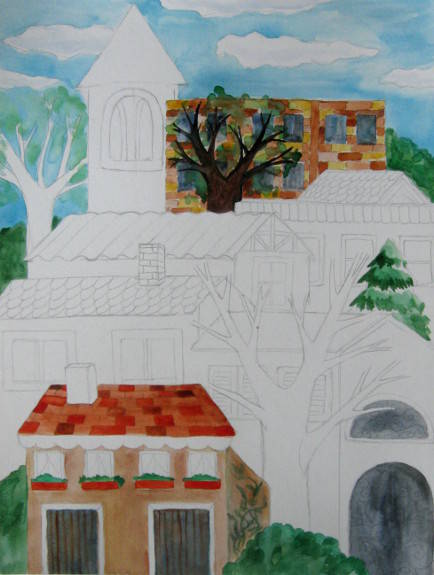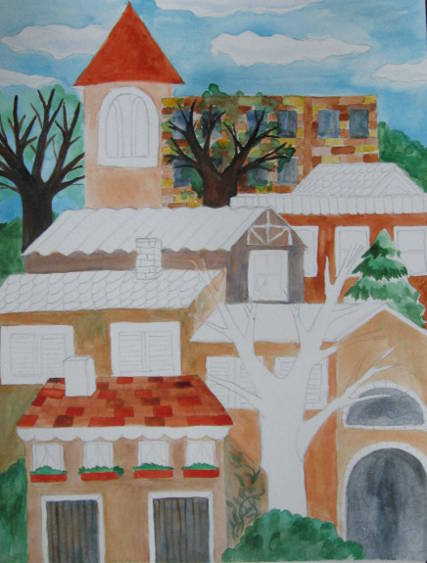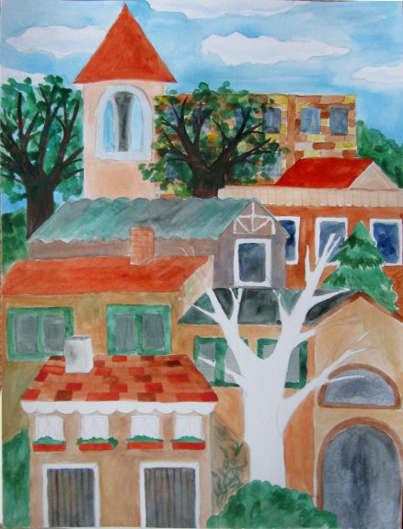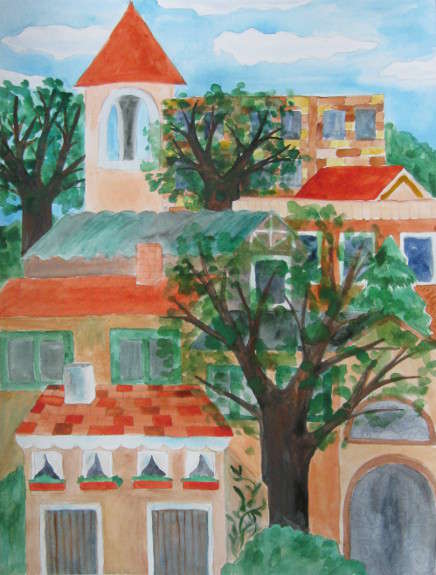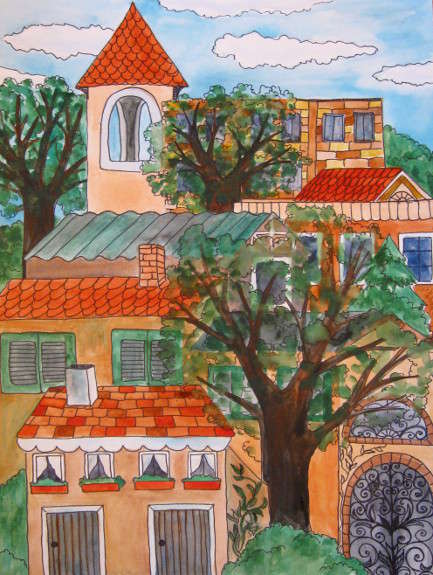This painting might look daunting at first, but if you follow the step by step instructions it is truly easy to do. The most important thing is not to get discouraged when you are half way done, but to carry it through to the end. You will be surprised as to how much you like the final result!
Paint: For this painting I used semi-dry watercolor paint, I find it easier and more manageable then the other types of watercolor paint. If you prefer a different one, that’s fine too. Paper: I also used an 11×15 140 lb watercolor paper. The paper is also subjective, if you have or like a different weight that’s entirely up to you. Brushes: I used a medium rounded brush (8 Royal SG 170, look at the picture to estimate the size) and a small pointed brush for smaller details. I also used a larger flat brush for big areas. Other Supplies: I also had a fine point sharp marker for the finish, and three different shades of green acrylic paint for the trees. You will only need a few drops of the acrylic paint to bring out the green of the trees at the end.
For this particular painting I have abandoned all proper ideas of perspective, and just drew the houses and buildings as a child might. It is a lot of fun, and produces happy, surprising results. So don’t worry about making your buildings look realistic or ‘just right’, just have fun with this and enjoy the process!
Before I start the instructions, let me share these few quick tutorials on how to draw simple houses, windows, roof patterns and a tree.
Here is a quick step by step process for two houses attached together. If you don’t feel confident enough you should try it on a scrap piece of paper a few times. It is all basic shapes: squares at first, followed by rectangles and then triangles and parallelograms for the roofs.
This one is just a simple front of the house with a trapezoid roof, two windows and a door. A few easy steps!
This image shows a 4 step process to a simple building with some seriously warped perspective.
This is a quick window and a roof pattern. Don’t forget to practice on some scrap paper until you’re confident enough!
Here is the final one on how to draw an easy tree!
As I go on, please note that I did all the sketches lightly in a pencil. For the purpose of instructions I had to digitally enhance the steps with the sketches to make them more visible and clear!
Step 1:
Start by, sketching with a pencil, some square and rectangle shapes overlapping one another. They should take up about a half of the page. Here you will see my rectangles, make your rectangles yours, how you like them best!
Step 2:
Add even more shapes further up, in the background. Leave some room for the highest rooftops and some sky area.
Step 3:
Add some triangles, trapezoids and parallelograms for rooftops. Please look above to see the tutorials on how to it quick and simple.
Step 4:
After you add the rooftops you will notice some extra lines have formed that shouldn’t be there, erase those and generally clean the page so only the lines you want are on it. Start adding the basic tree shapes.
Step 5:
Add more basic trees. Nothing extravagant, just the trunks and a few main branches. Add a few clouds.
Step 6:
Erase the parts of the buildings that are being covered up by the tree trunks and branches. Feel free to add some bushes on the sides and in the background.
Step 7:
Add more bushes and some windows. Doors and gates in the buildings up front. I used a semicircle gate and rectangles for doors. All the shapes are entirely up to you! I put a pine tree where I felt the space was too empty.
Step 8:
Start adding more and more details, like patterns on the rooftops and more windows.
Step 9:
Even more details! More windows, more patterns, some bricks on the buildings, an awning. Use your imagination!
These few pictures will show some of the details of the roofs I did while sketching. Just click on them to see them bigger if you’d like.
Step 10:
Even more details. I put some curly, twisty symmetrical lines on the gate, added a vine on the side of the upfront building and put many details on the front, like window flower boxes, door patterns, and curtains.
Step 11:
It is time to make your trees more complete by adding more branches. Just keep making branches in V-shapes until you have enough for a tree!
EVEN MORE DETAILS!!! Window frames, bricks on the far away buildings.
Step 12:
At this point I felt like my sketch was complete. Keep adding details until you feel satisfied!
The picture above is a close up of the previous one.
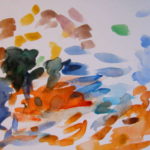 It is time to paint in with watercolor paints.
It is time to paint in with watercolor paints.
While working with watercolor I keep a little piece of watercolor paper next to where I paint. There I try out the colors, and make sure there isn’t too much or too little paint and/or water on my brush.
Step 13:
It is time to start adding color. First is the blue for the sky. Leaving the clouds white, I added just a light touch of blue to the bottom of each cloud, and a bit of green by the tree.
Step 14:
Time to color in the buildings. Because the sky is still moist, I don’t recommend starting with the areas that are next to it, to prevent the paint from running. I like the ones up front, this way the sky has time to dry up and won’t run onto the next buildings.
Step 15:
Painting in the bushes and adding some color to the pine tree in the background.
Again, it’s a good idea to let the area dry before painting adjacent areas!
Step 16:
I painted in the doors and the flowers in the window boxes. The doors I painted blue at first, didn’t like what that looked like, waited for the blue to dry, and painted brown over it.
Step 17
I started filling in the bricks on the tall building far away. I used several brown/red/yellow shades and filled a little at a time, allowing for the bricks to dry in between colors.
Step 18:
After the bricks are dry, color in the tree trunk and add some green for the leaves.
Adding another layer of green paint to the pine tree.
Also I did the roof on the front building.
Step 19:
Colored with dark green and black where the gate is, right over the sketch. Later on, with a fine black pen or marker you will retrace all the details and make them more prominent.
Step 20:
Just continuing to add color to different areas. In this case it’s window boxes.
Step 21:
Fill in the remaining buildings with different shades of brown/red/beige.
Step 22:
Fill in the rooftops. In my case I liked red and dark green. Add more greenery to the pine tree and the other trees. Fill in the windows with blues and grays, and with a small brush do some of the window frames.
Step 23:
In this step do the remaining tree trunks and the leaves, and finish up whatever details aren’t done yet.
Step 24:
When you feel that you have colored everything you wanted with watercolor it’s time to get the ink pen. After you use the ink I don’t recommend going back to watercolor, or the ink might run.
Using a fine ink pen or marker trace all the patterns and details to truly make them stand out and make your painting beautiful. The lines on the door, the doorknobs, the roof shingles and the bricks and borders, the shutters and window frames are just some ideas. There is so much you can do here, so just go for it!
Step 25, Final Step!
In this step just use the green acrylic paint with a small flat brush and apply it to the green of the trees to make them pop more.
At this point I was happy with my painting, but you could also go in with some colored pencils to shade and add more.
There you have it! I hope you enjoy this!
